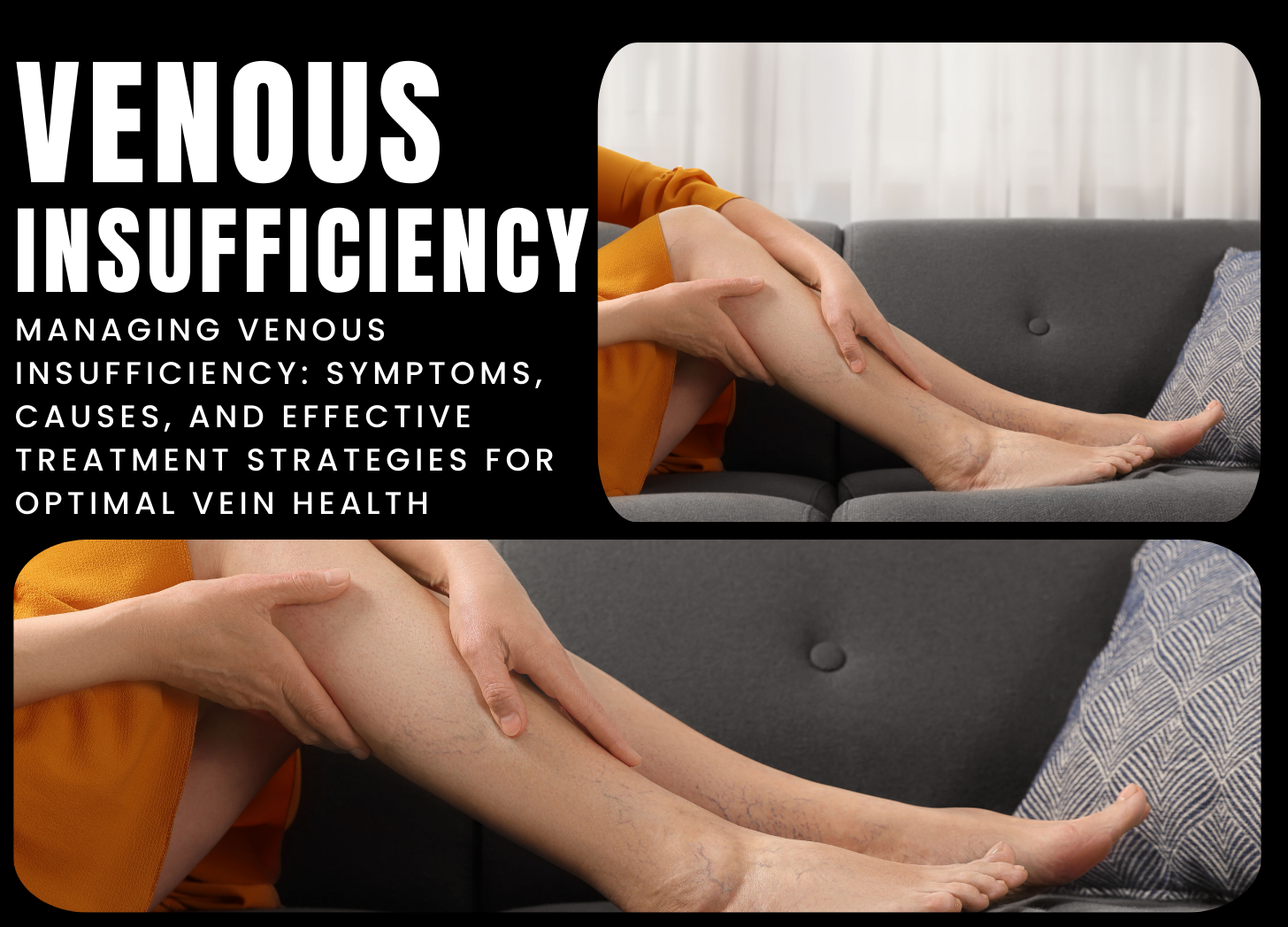Contact Us
Contact Us

Venous insufficiency is a disorder characterized by decreased venous function, mainly in the legs, which causes inadequate blood flow back to the heart. Normally, one-way valves in the veins prevent blood from flowing backward, allowing it to pass efficiently from the legs to the heart. However, when these valves are injured or weakened, blood can pool in the veins, causing swelling, pain, and changes in skin. Venous insufficiency can affect both superficial veins near the skin’s surface and deep veins within the muscles of the legs.
Chronic venous hypertension is the leading cause of venous insufficiency, and it can be caused by a variety of causes including extended standing or sitting, obesity, pregnancy, aging, a family history of venous disease, and a history of blood clots in the legs (deep vein thrombosis). Chronic venous hypertension causes an increase in pressure within the veins, stretching the vein walls and causing valves to fail. As a result, blood is not properly pumped back to the heart, causing symptoms of venous insufficiency.
Common symptoms of venous insufficiency include swelling (edema) in the legs and ankles, aching or heaviness in the legs, cramping or restless legs, itching or tingling sensations, skin discoloration or pigmentation, varicose veins (bulging, twisted veins visible beneath the skin), and the formation of venous ulcers (open sores) on the legs or ankles. Venous insufficiency symptoms can intensify with extended standing or sitting, hot temperatures, or hormonal changes (for example, during pregnancy or menstruation).
Venous insufficiency is often diagnosed using a combination of medical history, physical examination, and diagnostic techniques such as venous ultrasound (Doppler ultrasound), which assesses blood flow in the veins and detects any underlying abnormalities or venous reflux. Other imaging procedures, such as venography or magnetic resonance venography (MRV), may be used in some circumstances to offer more specific information regarding the structure and function of veins.
Treatment for venous insufficiency seeks to relieve symptoms, improve blood flow, and prevent consequences such venous ulcers and deep vein thrombosis. Conservative treatments such as leg elevation, compression stockings to support vein function and reduce edema, regular exercise to enhance muscle tone and circulation, and keeping a healthy weight are frequently recommended as first-line options. In cases of more severe or symptomatic venous insufficiency, minimally invasive techniques such as endovenous ablation, sclerotherapy, or ambulatory phlebectomy may be used to seal off or remove defective veins and redirect blood flow to healthy veins.
In conclusion, venous insufficiency is a common disorder defined by decreased vein function, which results in inadequate blood flow back to the heart. While venous insufficiency can cause discomfort and reduce quality of life, early detection and treatment can help alleviate symptoms and prevent problems. Individuals suffering from venous insufficiency can effectively manage their illness and preserve optimal vein health by adopting good lifestyle practices, wearing compression stockings as needed, and getting medical attention when necessary.
References:
1.Cleveland Clinic. (2022). Venous Insufficiency. Retrieved from https://my.clevelandclinic.org/health/diseases/16946-venous-insufficiency
2.Society for Vascular Surgery. (2022). Venous Insufficiency. Retrieved from https://vascular.org/patient-resources/vascular-conditions/venous-insufficiency
Post a Comment